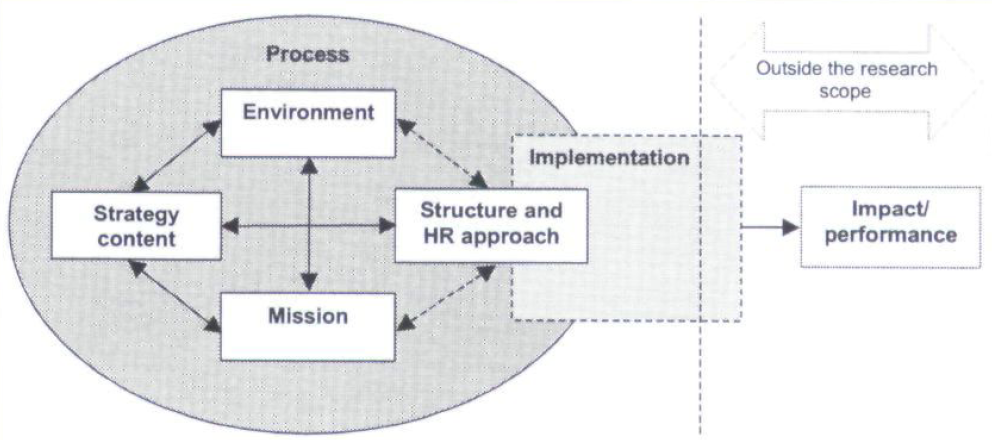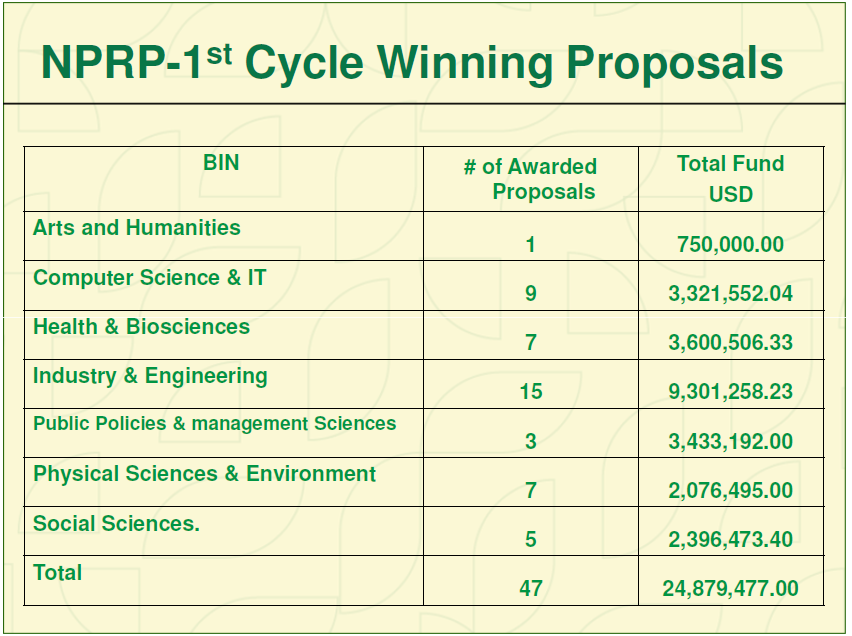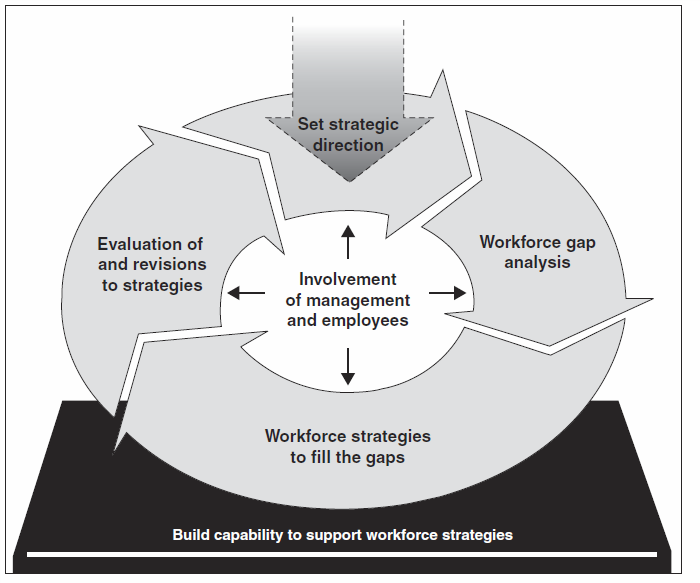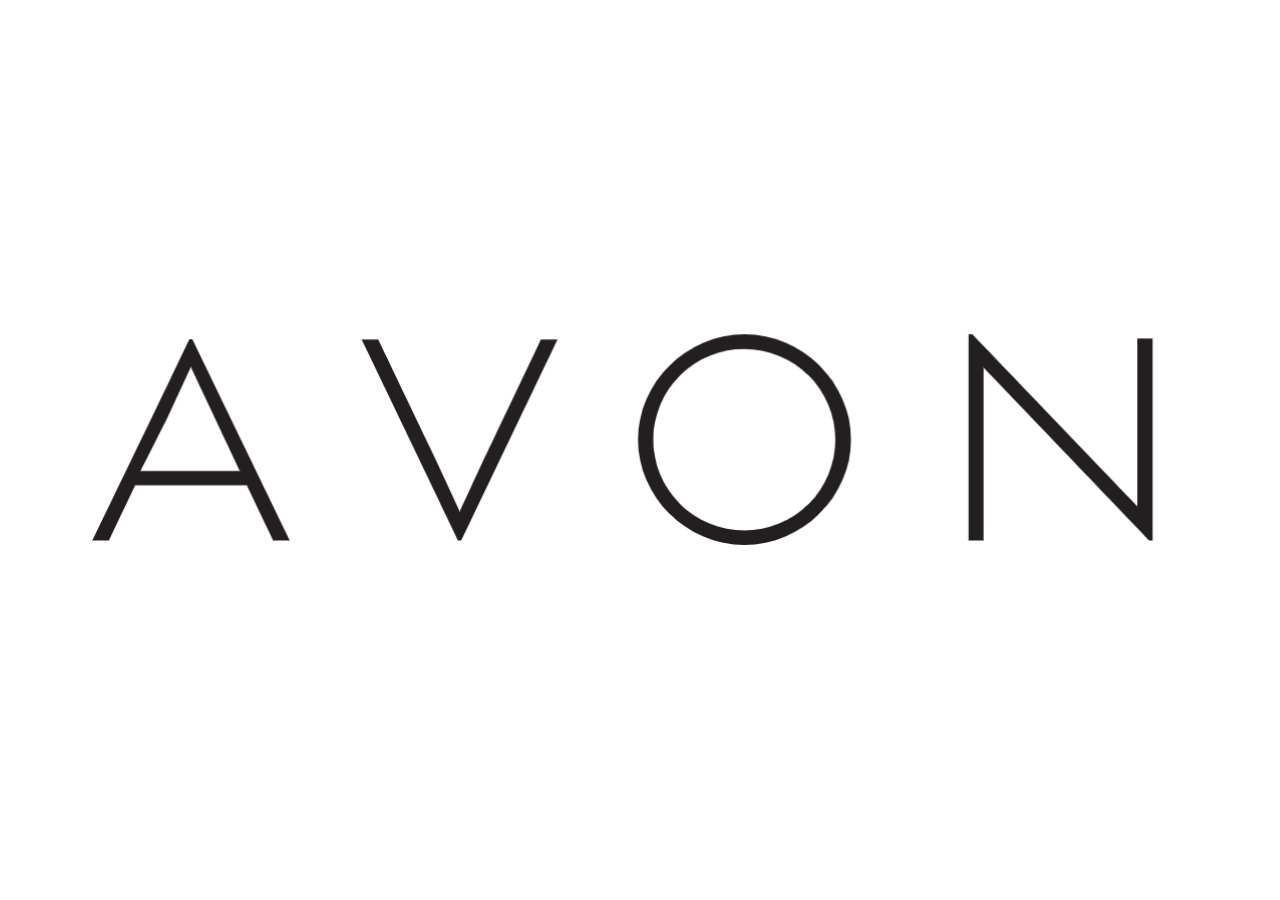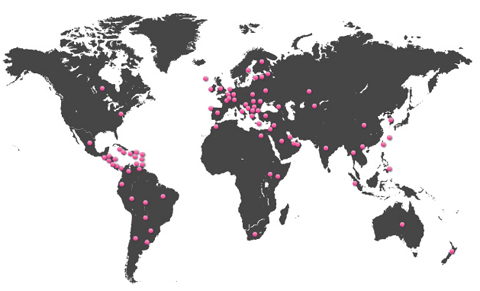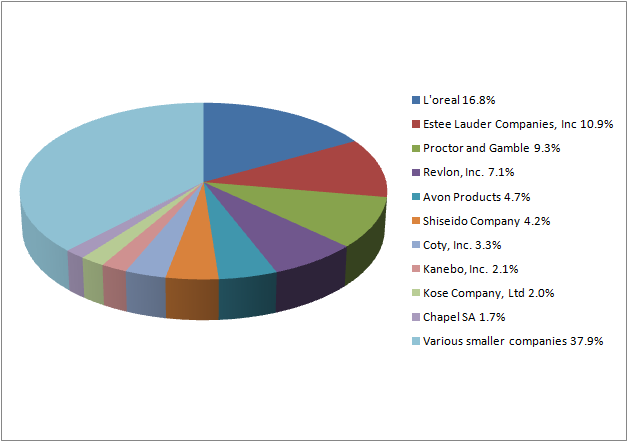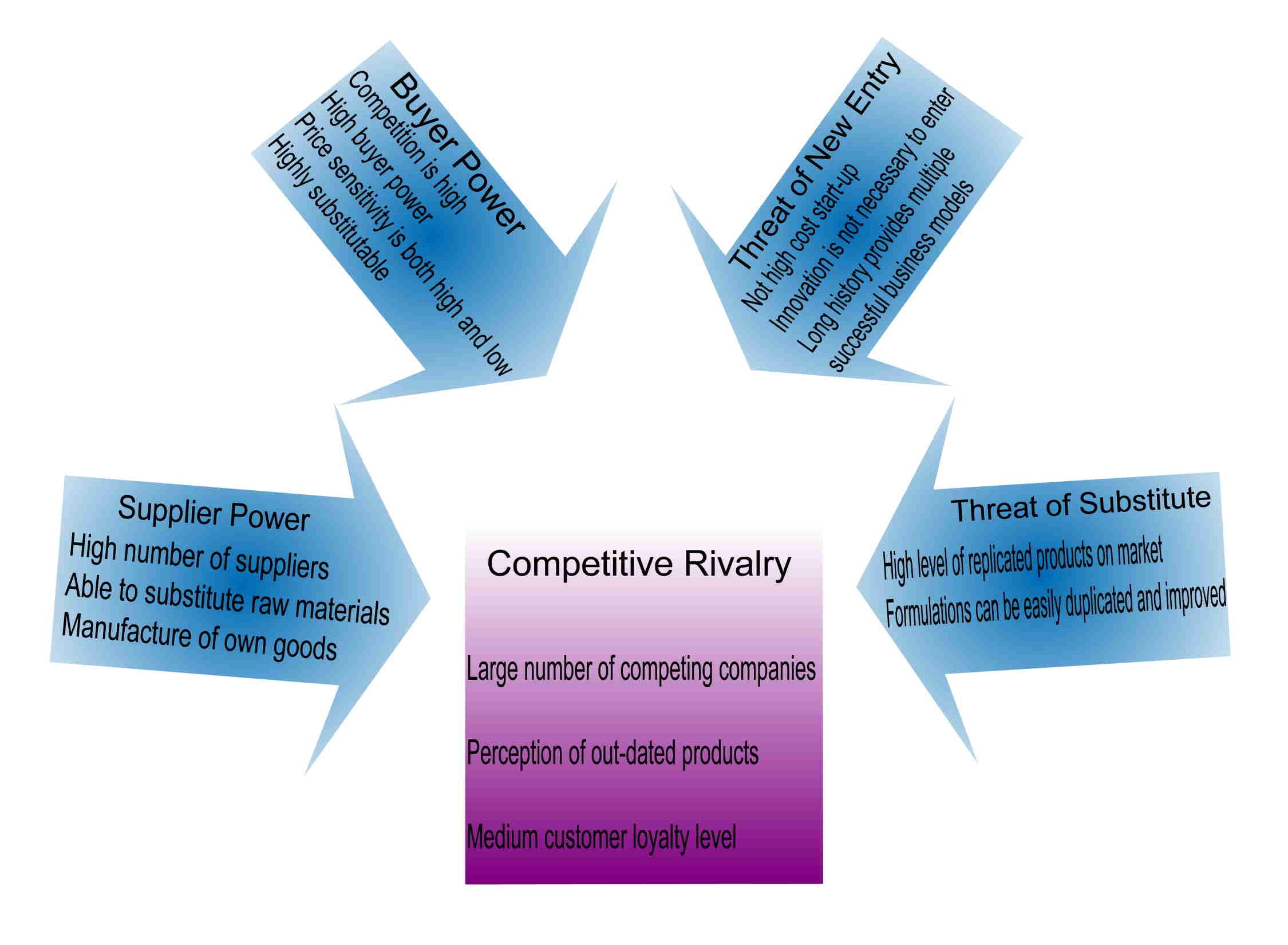Definition of Business Intelligence
Karim (2011) affirmed that decision-making process within a business organization is extremely complicated and a challenging task, which is essential for surviving profitably in the competitive business environment. In other words, competition is an indispensable element of current business environment and a strong determinant influencing the operations and success drivers of any business. Evidently, the fierce competition prevailing within the diverse markets have thus creased greater requirements for informational assistance to the managers in order to enable them to make fast and accurate decisions at the shortest possible time (Karim, 2011). Business intelligence is relatively a new term that has spurred in the recent times and has been extensively used in different business sectors for varied purposes (Rouhani et al., 2012). Rouhani et al. (2012) further postulated that the majority of literature on business intelligence, so far has covered areas such as business, vendor’s field and information system. Besides, the field of business intelligence is argued to be at its initial phase in the domain of scholarly research. Notably, different authors, such as Kumari (2013) and Rouhani et al., (2012), have been identified to provide a varying definition of business intelligence based on their viewpoints and understandings. Nevertheless, there is yet no universal definition of business intelligence. Despite the numerous definitions of business intelligence, many scholars, including Khan & Quadri (2014) and Feng, Liu, Li, Gao & Xu (2010) among others have also agreed with each other. Thus, significant uniformity in its classification and definition can be identified (Karim, 2011). In this regard, Howard Dresner defined ‘business intelligence’ as an inclusive term to explain “concepts and methods to improve business decision making by using fact-based computerized support systems” (Rouhani et al., 2012).
According to Kumari (2013), current business organizations are highly dependent on the data collected from various sources. In other words, the information serves as the ‘corporate industrial engine’. Accordingly, business intelligence is defined as the ability of the business organizations to integrate its core capabilities as well as processes, which are then transformed into knowledge for acquiring ‘right information’ at the ‘right time’ for the ‘right people’ through ‘right channel’. Moreover, it has been claimed that the information acquired therefrom facilitates the business organization to identify the potential opportunities as well as risks, which the managers can use to frame decisions and strategies for the growth and the success of the business even in the highly turbulent scenario. In addition, owing to the increased role of business intelligence system in making informed decisions, it has also been termed as a Decision Support System (DSS) (Kumari, 2013).
In contrast, Khan & Quadri (2014) have defined business intelligence as an integrated approach, which involves integrated use of the historical and the operational data together with analytical tools to provide pragmatic and competitive information to the decision makers. Accordingly, the major objective of business intelligence is ascertained to enhance the timeliness as well as quality of information available to managers in order to facilitate them with better understanding regarding the firms’ capability and positioning than the existing competitors (Kumari, 2013). In addition, it has been further claimed that business intelligence technique enables decision makers within an organization to effectively analyze the changing business trends, customers’ behaviors, preferences, and spending patterns. Alongside, it has been claimed that business intelligence is important for all business organizations operating in the current highly turbulent and volatile business environment as it facilitates managers to acquaint with the prevailing market conditions and core capabilities of the organizations (Khan & Quadri, 2014). Due to its effectiveness in assisting managers to take informed business decisions, business intelligence has been gaining widespread applicability in almost every kind of organizations irrespective of their size and scale of operations (Khan & Quadri, 2014).
Similarly Feng, Liu, Li, Gao & Xu (2010) stated that in the contemporary business environment, knowledge is an important economic resource facilitating business organizations by strengthening their core competencies as well as rendering them with increased competitive tractions. In this context, it has been argued that knowledge is firmly embedded in the business data (Rouhani et al., 2012). Consumption records of buyers, sales orders, records of dealers, voucher received from suppliers are also determined to yield valuable information for the business decision makers. Correspondingly, business intelligence is proclaimed as a crucial means to consolidate data from various sources and analyze those by processing the raw data for ensuring effective decision-making (Feng et al., 2010). More specifically, Rouhani et al., (2012) have propagated that business intelligence involves tapping data from inside and outside the organization for facilitating managers with information relevant to effective decision making. In addition, it is claimed that the role of business intelligence is extremely crucial in business organizations to sustain profitably. Notably, implementation of business intelligence system or technique is ascertained to facilitate managers to foster informational environment, necessary for determining ‘strategic business dimensions’. These dimensions facilitate managers to take the advantages of the existing capabilities and competencies of an organization (Rouhani et al., 2012).
Contextually, Shi & Lu (2010) argued that managing business performance is an essential requirement maximizing business profitability as well as remaining viable in the current, highly competitive business scenario. In this regard, it has been claimed that the role of business intelligence is prominent for the business organizations to ensure improved performance management. Business intelligence, together with other elements, such as planning, monitoring and budgeting provides business organizations with an efficient tool to improve performance management. According to Shi & Lu (2010), business intelligence is the first phase of managing the performance of an organization. Evidently, the implementation of the business intelligence system within an organization enables managers to set benchmarks based on the information derived from the internal and external environment. The established benchmarks are further used to appraise the performances of employees as well as the organization (Shi & Lu, 2010).
Historic Evolution of Business Intelligence
In the view point of Nedelcu (2013), business intelligence is gaining widespread popularity within the business set-up in the recent years. In addition, the term is argued to be used in different areas and domains, including data technology and business modeling. In general, the influence of business intelligence on the organizational decision making process is growing consistently. Nevertheless, Nedelcu (2013) stated that the evolution of business intelligence roots back to mid 1990s. In this regard, it has been postulated that the term, ‘business intelligence’, was first presented by Gartner Group. Although, it is claimed that the term ‘business intelligence’ came into limelight in mid 1990s, it has been recognized by many scholars long before its actual use in ‘mainframe reporting systems’. Evidently, Azita (2011) claimed that the term ‘business intelligence’, first appeared in an article, “A Business Intelligence System” narrated by Hans Peter Luhn, a researcher in IBM back in 1958. The term began to evolve in the late 1960s that reached its hike in the mid 1980s. In addition, during the same era, decision support systems originated within the ‘computer assisted models’ driven with the objective of facilitating business organizations to take effective decisions along with assuring vigilant performance scheduling. Evidently, this decision support system is firmly related to the evolution business intelligence along with two other concepts, which include Data Warehousing and OLAP (Online Analytical Processing) (Azita, 2011). It is in this context that Chee, Chan, Chuah Tan, Wong, Yeoh (2009) affirmed, in the year 1989, Howard Dresner, also known as the father of business intelligence, proposed the term for the first time. Nevertheless, it has been since 1990 that the usage of the term ‘business intelligence’ started gaining widespread popularity (Chee et al., 2009).
According to Foster, Hawking & Stein (2005), companies across the world have laid considerable attention on improving business tractions as well as processing of data. Traditionally, top-level management revealed their disappointment regarding the role of information system in supporting decision-making process within an organization. Nevertheless, Foster et al. (2005) have argued that business organizations have conventionally envisaged using computer technology as a decision support system, particularly since the introduction and integration of modern computer technology to business. As a result, the Enterprise Resource Planning (ERP) systems industry evolved back in 1990s. Evidently, since the development of the Enterprise Resource Planning (ERP) systems industry, there has been a considerable increase in the business intelligence solution adoption rate, as the development of business intelligence solutions, such as ERP facilitated, unprecedented growth in its adoption across a variety of functional domains (Foster et al., 2005).
In the words of Henry & Hitbrand (2012), operations of the business organizations, traditionally, was limited within the domestic boundary and were less dispersed. However, with the advent of globalization, business organizations have been extensively involved in expanding their business operations beyond the national boundary to other countries of the world. Nevertheless, prior to the extensive expansion strategies adopted by the business organizations, the employees and the management of the organization had coherent understanding regarding the available competency and the potential challenges that may have interrupting the performance as well as the decision making capability of the organization. Nonetheless, the business organizations in the current context, operating in the diverse locations across the world cannot rely on interpersonal relationships for attaining relevant information necessary for making informed decisions. Contextually, the concept of business intelligence evolved to deal with the challenges of acquiring relevant information, which the contemporary business has been gaining widespread popularity. At the same time, Henry & Hitbrand (2012) have claimed that business intelligence in the past, emphasized on structured data. However, with the increasing application of business intelligence, significant changes in the same have been witnessed. Unlike in the past, business intelligence in the current business environment encompasses both structured and unstructured data for making informed business decisions (Henry & Holtbrand, 2012).
As per Wu, Barash & Bartolini (n.d.), business intelligence has been traditionally perceived as a management concept that was used to describe technologies applied by the managers to gather information for the purpose of making informed business decisions. In addition, it has been argued that business intelligence in its initial stage of evolution primarily included conformist data warehousing technologies, namely ad-hoc querying and OLAP. Nevertheless, since its evolution, gradual improvements were witnessed in terms of its applications and technologies. To be precise, the business intelligence technologies in the current context are not limited to conventional data warehousing technologies, rather, a significant advancement has been witnessed. In this regard, most advanced and updated business intelligence tools and techniques have evolved to include HP Openview Decision Center comprising predictive analysis using rule-based simulations, advanced visualization capabilities, data-mining, and web services to name a few. Moreover, business intelligence systems typically were architected on the back-end, supported with the data warehousing technologies. On the contrary, in the recent time, architectures pertaining to business intelligence systems have shifted towards ‘distributed multi-tier enterprise analytic applications’ (Wu, et al., n.d.).
Accordingly, Pirttimäki (2007) argued that the evolution of business intelligence has long been witnessed, but its systematic use in the domain of business is relatively recent. At the same time, Pirttimäki (2007) claimed that there has been a growing need of systematic business intelligence, yet the concept is criticized with numerous challenges to find a foothold in the business world as well as academia. To be mentioned in this context, although numerous concepts have been defined and related to business intelligence since its origination, unfortunately the categorization of many of these concepts is still deemed as ambiguous (Pirttimäki, 2007).
Applications and Dimensions of Business Intelligence
According to Shahbani & Shiratuddin (2011), the development and application of business intelligence system is an extremely challenging task. In this regard, it has been claimed that the concept, being a young discipline, lacks specific or well-developed models or strategies for its future development. At the same time, information required for the analysis purpose emphasizing business intelligence application within the business organization is composed of heterogeneous sources, which further makes the task of the managers quite difficult. Thus, it has been overwhelmingly argued that the success of business intelligence application largely relies on the degree to which, the system coincides with the users and the business requirements. Evidently, requirements are considered to be the most essential component of building business intelligence system within an organization (Shahbani & Shiratuddin, 2011).
Furthermore, Bara, Botha, Diaconiţa, Lungu, Velicanu & Velicanu (2009) proclaimed that with continuous developments and advancements in the technologies, business organizations are frequently involved in the quest of new ways to attain value position. In this regard, it has been propagated that an effectively developed business intelligence system offers numerous advantages to the organization, which can be apparent in terms of effective decision-making processes across all business units. Notably, it has been claimed that in the recent years, there was a substantial rise witnessed in the investments made by the business ventures on building business intelligence (Bara et al., 2009). Nevertheless, lack of an appropriate method of measuring the efficiency of business intelligence has created certain reluctance amid few business organizations to develop business intelligence as a supporting tool when making effective decisions. At the same time, the increased ability of business intelligence systems to promote efficient use of information available within and outside the organization has drawn significant attention of managers towards its widespread application. According to Bara et al. (2009), business intelligence system possess certain prominent characteristics such as the ability to provide representative information to top level management, supporting strategic functions of an organization, including goal setting and forecasting.
Negash (2004) thus argued that application of business intelligence system within an organization may turn out to be a complex task if it is not implemented properly. Accordingly, it has been claimed by Negash (2004) that business intelligence systems use both unstructured and structured data and thus, the development of analytical techniques to integrate these two types of data are extremely important for achieving the best outcomes. In addition, business intelligence is considered to be proactive. In this regard, certain components are determined as an integral part of proactive business intelligence. Notably, these components include ‘real-time data warehousing’, ‘data mining’, ‘automated anomaly and exception detection’, ‘proactive alerting with automatic recipient determination’, ‘seamless follow-through workflow’, ‘automatic learning and refinement’, ‘geographic information systems’ and ‘data visualization’ (Negash, 2004).
According to Olszak & Ziemba (2007), implementation of business intelligence facilitates an organization to track its profitability, evaluate its expenditures, and observe its environment as well as discover business anomalies. Thus, business intelligence system can be evaluated from varying perspectives. Nevertheless, it has been further affirmed that top-level management or the business organizations are required to closely relate business intelligence with specific organizational philosophy and methodology to gain the desired level of efficiency. In addition, proper application of business intelligence system within an organization is determined to support the decision making process across all levels including top level, middle level and operational level within the organization. Furthermore, Olszak & Ziemba (2007) have postulated that developing and implementing effective business intelligence system would require the business organization to foster certain working culture embedded in information along with information technologies. In addition, creation phase of business intelligence is time consuming, which requires significant investments as well as manpower. The creation process of business intelligence is also determined to involve myriad stages, which may consist of defining business intelligence, identification of source data, selection of appropriate business intelligence tools, building and implementing business intelligence, exploring and discovering new informational requirements. Embracing these stages is considered to be essential for ensuring successful implementation of the system. Nevertheless, managers are required to be meticulous while executing these stages (Olszak & Ziemba, 2007).
Bara et al. (2009) thus stated that the selection of appropriate business intelligence architecture is extremely important for ensuring success of the business intelligence system. It is fundamentally owing to the fact that in absence of proper business intelligence architecture, there is an increased possibility that the implemented business intelligence system within an organization might collapse. Architecture of business intelligence is thus classified in three levels, which include data management, model management and data visualization tools. In this regard, the first level, involving data management is associated with the type of data sources comprising relational database and data warehouse. Business intelligence system at this level usually considers the use of data warehousing solution for collecting data from internal as well as external sources for the purpose of analysis. Moreover, this level involves the extraction and processing of data for ‘high level integration’. In subsequence, the second level in business intelligence systems’ architecture involves model management. This level encompasses business intelligence tools and technologies such as OLAP and is applied to extract information from a multi-dimensional database. Notably, this level is grounded on varied types of models in order to perform static interpretation as well as forecasting data. The next level consists of data visualization tools, wherein the use of data visualization tools, such as graphs at this level, facilitates the managers to examine and acquire a clear picture of existing complex interrelationships (Bara et al., 2009).
Ong, Siew, & Wong (2011) has also reviewed and envisaged that organizations in the contemporary business environment have adopted business intelligence as a catalyst to cater the diverse business requirements while enhancing the effectiveness of the organizations to sustain profitably and competitively. Accordingly, ‘five layered business intelligence architecture’ has been determined. In this regard, the five layered architecture comprises ‘data source’, ‘ETL’, ‘data warehouse’, ‘end user’, and ‘metadata layers’. This five-layered architecture is extremely important for attaining quality data as well as ensuring smooth flow information relevant for the success of business intelligence system (Ong, Siew, & Wong, 2011).
Influences and Success Drivers to Business Intelligence
According to Klepić (2006), performances, as well as operations of the business organizations, generally rely on the effectiveness of the decisions undertaken by the top management of the organization. In this regard, the top management of the business or the managers within an organization are often confronted with complex problems and challenges, which might be unclear and unstructured depending upon the prevailing circumstances wherein the business operates. Notably, implementation of business intelligence has been determined to have considerable and positive influence on the ability of the managers to understand the complexities of the problem being encountered as well as the features surrounding the problem. This particular fact in turn suffices that the development of the business intelligence and the performance of the senior level management with respect to the decision-making is positively related (Klepić, 2006).
Olszak & Ziemba (2012) dictated that the concept of business intelligence has been subject to several discussions over the years with growing interest of scholars towards the concept. To be noted, the business intelligence system is generally espoused by international ventures and multinational corporations. Nevertheless, the role and the impact of business intelligence system tend to change depending upon the prevailing circumstances. Moreover, with growing use of business intelligence in the field of strategic planning, monitoring operations, and customer relationship management among others, the influence of the business intelligence system on the firms adopting it is ascertained to be quite apparent (Olszak & Ziemba, 2012).
Notwithstanding, Olszak & Ziemba (2012) expressed that the growing complexities associated with the modern business intelligence system has further dramatically influenced the business organizations to a great extent. Nevertheless, implementation of business intelligence system undoubtedly facilitates business organizations, particularly the top management to take decisions that positively influence the performance of the business while operating in the current highly dynamic and fiercely competitive business environment. Accordingly, numerous critical success factors have been defined with respect to the implementation of the business intelligence system in an organization. However, theories related to the solid methodical base and proven scientific frameworks are considered as the most important critical success factors responsible for business intelligence implementation process. Besides, four major sources of critical success factors are identified, which include ‘industry-based factors’, ‘competitive strategy’, ‘industry position’, and ‘geographical factors’ and ‘temporal factors’. In addition, based on the above-mentioned sources of critical success factors, five critical success factors have been delineated by Olszak & Ziemba (2012). Accordingly, these five success factors include ‘management support’, ‘user’s involvement’, ‘experience of a project manager’, ‘clearly defined business objectives’ and ‘minimized scope of the project’ (Olszak & Ziemba, 2012).
According to Adamala & Cidrin (2011), business intelligence system needs to be designed in accordance with the needs of the end users. Besides, it should be closely linked with the broader goals and objectives of the organization. In addition, the business intelligence project needs to be focused on best opportunities existing within the organization. Similarly, Yeoh & Koronios (2010) stated that implantation of business intelligence system within an organization requires huge resources. Given the difficulties associated with the implementation of the business intelligence framework, limited research has been found that shows the effect of key performance factors on an organization’s implementation of the business intelligence system. Yeoh & Koronios (2010) also introduced an extensive form of essential market intelligence performance factors, stressing a related element. Correspondingly, Yeoh & Koronios (2010) proclaimed that the support and commitment of management are the most imperative factors influencing the implementation of the business intelligence system. A regular support and sponsorship from top-level management facilitates in acquiring the required financial, human and other resources necessary for the implementation of the business intelligence system in an organization. On further note, it has been argued that clear objectives along with properly designed business cases are vital factors influencing the implementation of business intelligence. More specifically, it has been claimed that the implementation of business intelligence is driven by the business, thus defining strategic business goals as essential for directing the implementation of business intelligence. In this context, the long-term visions, particularly in organizational terms are imperative for designing appropriate business cases. In addition, the designed business case is further claimed to be aligned with the broad organizational goals and objectives, as such alignment is conceived to have a strong impact on the outcome derived from the implementation of business intelligence system in an organization (Yeoh & Koronios, 2010).
In addition, balanced team composition is considered as another critical success factor for business intelligence implementation. In this regard, it has been claimed that competent and skilled information technology (IT) staff is necessary for ensuring the successful implementation of business intelligence system in an organization. Iterative development approach is also recognized as an important factor influencing the implementation of business intelligence. Besides these attributes, change management also facilitates in establishing better communication, which is extremely pivotal for acquiring positive outcomes from the implementation of business intelligence system. Quality of data is also argued as an important factor as the reliability of the outcome derived from the implementation of business intelligence system is advocated to largely rely on the reliability and the accuracy of data collected from various sources. Similarly, technical framework is affirmed as another paramount factor influencing the successful implementation of business intelligence system in an organization (Yeoh & Koronios, 2010; Amberg, Fischl & Wiener, 2005).
Farrokhi & Pokoradi (2013) also established three additional crucial success drivers that are important for the execution of an organization’s market intelligence framework in a similar sense. These additional critical success factors involve ‘reliable back-end system’ ‘metadata management’ and ‘agile methodology’. To be mentioned in this context, ‘reliable back-end system’ is an essential requirement for the implementation of business intelligence system, which generally deals with regularly updating the available data. Correspondingly, ‘metadata management’ is defined as end-to-end method necessary for augmenting and maintaining meta-data source and related processes and ‘agile methodology’ is considered as another prominent factor influencing the implementation of business intelligence system in an organization.
Benefits and Challenges of Business Intelligence
With reference to the viewpoint of Scholz Schieder, Kurze, Gluchowski & Boehringer (n.d.), implementation of business intelligence offers numerous benefits to the organizations. The implementation of business intelligence is further accompanied with certain challenges that might contribute towards increasing reluctance amid the business organizations to implement business intelligence system with the desired level of efficiency. Accordingly, three major benefits of business intelligence system have been determined. In this regard, implementation of business intelligence system is observed to facilitate in improving data support. More specifically, Scholz et al. (n.d.) ascertained that the implementation of the business intelligence system reduces the overall efforts of a business organization pertaining to data analysis as well as reporting. In addition, the implementation of the system is further advocated to contribute towards enhancing the quality of report while promoting flexibility in the information requirements. In subsequence, it is observed that implementation of the system results in improved decision-making. In this regard, the implementation of the business intelligence system involves the analysis of current data, which eventually facilitates in making accurate and reliable decisions. On further note, Scholz et al. (n.d.) stated that the implementation of the system contributes towards increasing the ability of the managers and the top-level management to identify the potential risks as well as opportunities. One of the most important benefits to the adoption of the business intelligence system is argued to be in the form of savings. In this regard, it has been claimed that the implementation of the system promotes cost savings, which results in acquiring increased competitive traction. Apart from the above-discussed benefits, three major challenges witnessed during the implementation of business intelligence system have also been determined. In this context, management of business intelligence system has been extremely complex. Notably, if a person involved in the management of the business intelligence system is not qualified, it may act as a burden for the business organization. Similarly, another major drawback of the system is identified to be closely associated with the technical factors. Correspondingly, it the system involves extensive use of software and other technical features. Thus, errors in the software and insufficient security features might negatively influence the competitiveness of the business organization adopting it. According to Scholz et al. (n.d.) the next challenge is related to the aspect of interfaces. In this context, restricted data export followed by the conflation risk of data may cause adverse impact on the effectiveness of the business intelligence system implemented within an organization (Scholz et al., n.d.).
According to Ramanigopal, Palaniappan & Mani (2012), business intelligence system can be implemented for various purposes. In this regard, it has been noted that the system can be used as a tool of measurement, analytics, enterprise reporting, collaboration platform and knowledge management. Notably, as a measurement tool, the system can be used to create benchmarks that would facilitate the managers within an organization to track the progress of the business, based on which, they can take appropriate decisions. Similarly, the system as analytics can be applied to develop a quantitative process to make concentrate decisions. Besides, the system can also be used as an enterprise-reporting tool to create infrastructure necessary for strategic reporting. On further note, the system can be applied as the collaboration platform, which involves the use of internal and external information for smooth functioning of the organization. Last but not the least; the system can be applied as knowledge management tool that would facilitate the business organizations to incorporate insights as well as experiences relevant to business knowledge (Ramanigopal et al., 2012).
In addition, Ramanigopal et al. (2012) demonstrated numerous benefits to the implementation of the business intelligence system to an organization. Correspondingly, the implementation of the system is identified to promote operational efficiency as well as facilitate identification of the root causes of any potential risks pertaining to the operations of the business along with promoting necessary actions to eliminate the risks. In addition, the implementation of the system is argued to favorably influence the relationships of an organization with its customers and the suppliers wherein the role of business intelligence system is also determined to be vital in terms of identifying wastage of resources, thereby retrenching the additional costs incurred by the organization (Ramanigopal et al., 2012).
Conversely, certain limitations of the business intelligence system have been determined, which tends to impose negated impact on the organization implementing the system. In this regard, Ramanigopal et al. (2012) stressed that the implementation of the business intelligence system is accompanied with the aspect of rigidity. Notably, once the business intelligence system is implemented, it becomes quite challenging for the business organization to bring changes in the system. At the same time, alterations in the implemented system consume considerable time as well as cost. In addition, Ramanigopal et al. (2012) further expressed that the implementation of the system within an organization is argued to contribute towards increasing complexity in the commercial setting. Any change in business intelligence system is also perceived to compound with increased resistance to change from the participants within the organization (Ramanigopal et al., 2012).
Contextually, Guarda, Santos, Pinto, Augusto & Silva (2013) noted that in the current complex business environment, implementation of business intelligence serves as a key factor promoting the organization with increased competitive advantages. In this regard, certain benefits of business intelligence system have been outlined. Notably, the implementation of the system is identified to reduce the problems associated with the dispersion of relevant information. Besides, Guarda et al. (2013) postulated that the system is instrumental in providing the organization with increased scope to interact with various users. In addition, with the implementation of the system, information required by the business organization is available within a real time, which is extremely essential for taking effective decisions (Guarda at al., 2013).
On the contrary, Ishaya & Folarin (2012) have identified certain risks and challenges as well with the implementation of the business intelligence system. In this regard, the implementation of the system is argued to be associated with challenges pertaining to legal issues, improper implementation and ethical problems (Ishaya & Folarin, 2012). Hočevar & Jaklič (2010) claimed that implementation of business intelligence system, although have a certain negative impact on the business organization adopting it, can be mitigated through careful implementation and execution of the system (Hočevar & Jaklič, 2010).
Conclusion
The review of the literature yielded a rich understanding regarding the business intelligence and its impact on the modern business organizations. The exploration of the meaning of business intelligence postulated that different scholars have expressed widely contrasting but linked views regarding the meaning and the definition of business intelligence. Nonetheless, the review of literature acquainted that several scholars have also provided a uniform definition of the business intelligence. In general, business intelligence can be ascertained as an umbrella term that involves the processing of data into information with the use of analytical tools, which aids business organizations to make informed decisions. The review of literature also facilitated an in-depth understanding regarding the evolution of the term business intelligence. In this context, the findings obtained from the review of literature revealed that the term ‘business intelligence’ first appeared in an article, “A Business Intelligence System” narrated by Hans Peter Luhn a researcher in IBM back in 1958. Since then, gradual progression was witnessed in this field. Moreover, it has been ascertained from the review of literature that the term ‘business intelligence’ began to gain widespread popularity in the mid 1990s when Howard Dresner introduced it.
Further investigation on business intelligence facilitated with the knowledge that the system is currently applied in almost all sectors and business areas ranging from the retail industry, telecommunication industry, to the banking and financial industries. At the same time, it has been observed that implementation of business intelligence systems has considerable impact, especially with respect to the decision making capability of an organization. Notably, business organizations in the current context are confronted with serious problems arising internally as well as externally. Thus, implementation of business intelligence system involves data collection from inside and outside the organization, which are then analyzed for ensuring a clear picture of the problems faced by the organization. Eventually, it enables managers to take informed decisions accordingly, based on the analyzed data. In addition, various factors have been identified to be crucial for ensuring successful implementation of the business intelligence system and thereby deriving favorable outcomes. In this regard, the most prominent aspects or the critical success factors influencing the implementation of the business intelligence system are ascertained to be ‘management support’, ‘user’s involvement’, ‘experience of a project manager’, ‘clearly defined business objectives’ and ‘minimized scope of the project’. Accordingly, it has been determined that organizations opting for implementing the business intelligence system needs to carefully consider these factors in order to achieve the desired outcomes from the implementation of the system.
Moreover, the review of literature further suggested that implementation of business intelligence system within an organization is accompanied with numerous benefits as well as challenges. In this context, the most prominent benefit associated with the implementation of the system is ascertained in the form of effective decision-making. Besides, increased operational efficiency followed by a reduction in the additional costs has been determined as the auxiliary benefits arising from the implementation of the system. On the contrary, rigidity, with respect to changes in the system, along with legal and ethical issues have been determined to be the few major challenges surrounding the organizations as a result of the implementation of the concept. To recapitulate, the findings from the review of literature eventually revealed that despite the certain challenges inherited by the system, the application of the same offers numerous advantages to the organizations adopting it.
References
- Adamala, S., & Cidrin, L. (2011). Key success factors in business intelligence. Journal of Intelligence Studies in Business, 1, 107-127.
- Amberg, M., Fischl, F., & Wiener, M., (2005). Background of critical success factor research. Working Paper No. 2.
- Azita, S. S. (2011). An approach to building and implementation of business intelligence system in exchange stock companies. Australian Journal of Basic and Applied Sciences, 5(6), 1491-1495.
- Bara, A., Botha, I., Diaconiţa, V., Lungu, I., Velicanu, A., & Velicanu, M. (2009). A model for business intelligence systems’ development. Informatica Economică 13(4), 99-108.
- Chee, T., Chan, L., Chuah, M., Tan, S., Wong, S., & Yeoh, W. (2009). Business intelligence systems: state-of-the-art review and contemporary applications. Symposium on Progress in Information & Communication Technology, 96-101.
- Farrokhi, V., & Pokoradi, L. (2013). Organizational and technical factors for implementing business intelligence. Annals of the Oradea University, 75-78.
- Feng, Y., Liu, Y., Li, X., Gao, C., & Xu, H. (2010). Design of the low-cost business intelligence system based on multi-agent. International Conference of Information Science and Management Engineering, 291- 294.
- Foster, S., Hawking, P., & Stein, A. (2005). Business intelligence solution evolution: adoption and use. Business Intelligence Journal, 10 (4), 44-53.
- Guarda, T., Santos, M., Pinto, F., Augusto, M., & Silva, C. (2013). Business intelligence as a competitive advantage for SMEs. International Journal of Trade, Economics and Finance, 4(4), 187-190.
- Henry, H., & Holtbrand, T. (2012). The 2020 workplace and the evolution of business intelligence. Business Intelligence journal, 17(1), 13-19.
- Hočevar, B., Jaklič, J. (2010). Assessing benefits of business intelligence systems – a case study. University of Ljubljana, 87-119.
- Ishaya, T., & Folarin, M. (2012). Business intelligence in telecoms industry: a service oriented approach. Advances in Customer Relationship Management, 126-146.
- Khan, T. A., & Quadri, A. M. K. (2014). Business intelligence: an integrated approach. International Journal of Management and Innovation, 6 (2), 21-29.
- Klepić, Z. (2006). The influence of business intelligence on the performance of the top management business decisions. University of Mostar, 971-988.
- Kumari, N. (2013). Business intelligence in a nutshell. International Journal of Innovative Research in Computer and Communication Engineering, 1(4), 969-975.
- Nedelcu, B. (2013). Business intelligence systems. Database Systems Journal, IV (4), 12-20.
- Negash, S. (2004). Business intelligence. Communications of the Association for Information Systems, 13, 177-195.
- Olszak, C. M., & Ziemba, E. (2007). Approach to building and implementing business intelligence systems. Interdisciplinary Journal of Information, Knowledge, and Management, 2, 136-148.
- Olszak, C. M., & Ziemba, E. (2012). Critical success factors for implementing business intelligence systems in small and medium enterprises on the example of Upper Silesia, Poland. Interdisciplinary Journal of Information, Knowledge, and Management, 7, 130-150.
- Ong, I. L., Siew, P. H., & Wong, S. F. (2011). A five-layered business intelligence architecture. Communications of the IBIMA, 1-11.
- Pirttimäki, V. H. (2007). Conceptual analysis of business intelligence. South African Journal of Information management, 9(2), 1-14.
- Ramanigopal, C., Palaniappan, G., & Mani, A. (2012). Business intelligence for competence in consumer packaged good industry. International Journal of Marketing and Technology, 2(5), 84-105.
- Ranjan, J. (2009). Business intelligence: concepts, components, techniques and benefits. Journal of Theoretical and Applied Information Technology, 9(1), 60-70.
- Rouhani, S., Asgari, S., & Mirhosseini, S. V. (2012). Review study: business intelligence concepts and approaches. American Journal of Scientific Research (50), 62-75.
- Scholz, P., Schieder, C., Kurze, C., Gluchowski, P., & Boehringer, M. (n.d.). Benefits and challenges of business intelligence adoption in small and medium-sized enterprises. 18th European Conference on Information Systems, 1-12.
- Shahbani, M., & Shiratuddin, S. (2011). Conceptual design model using operational data store (codmods) for developing business intelligence applications. IJCSNS International Journal of Computer Science and Network Security, 11 (3), 161169.
- Shi, Y., & Lu, X. (2010). The role of business intelligence in business performance management. International Conference on Information Management, Innovation Management and Industrial Engineering, 184-186.
- Wu, L., Barash, G., & Bartolini, C. (n.d.). A service-oriented architecture for business intelligence. HP Laboratories, 1-7.
- Yeoh, W., & Koronios, A. (2010). Critical success factors for business intelligence system. Journal of Computer Information Systems, 23-32.








